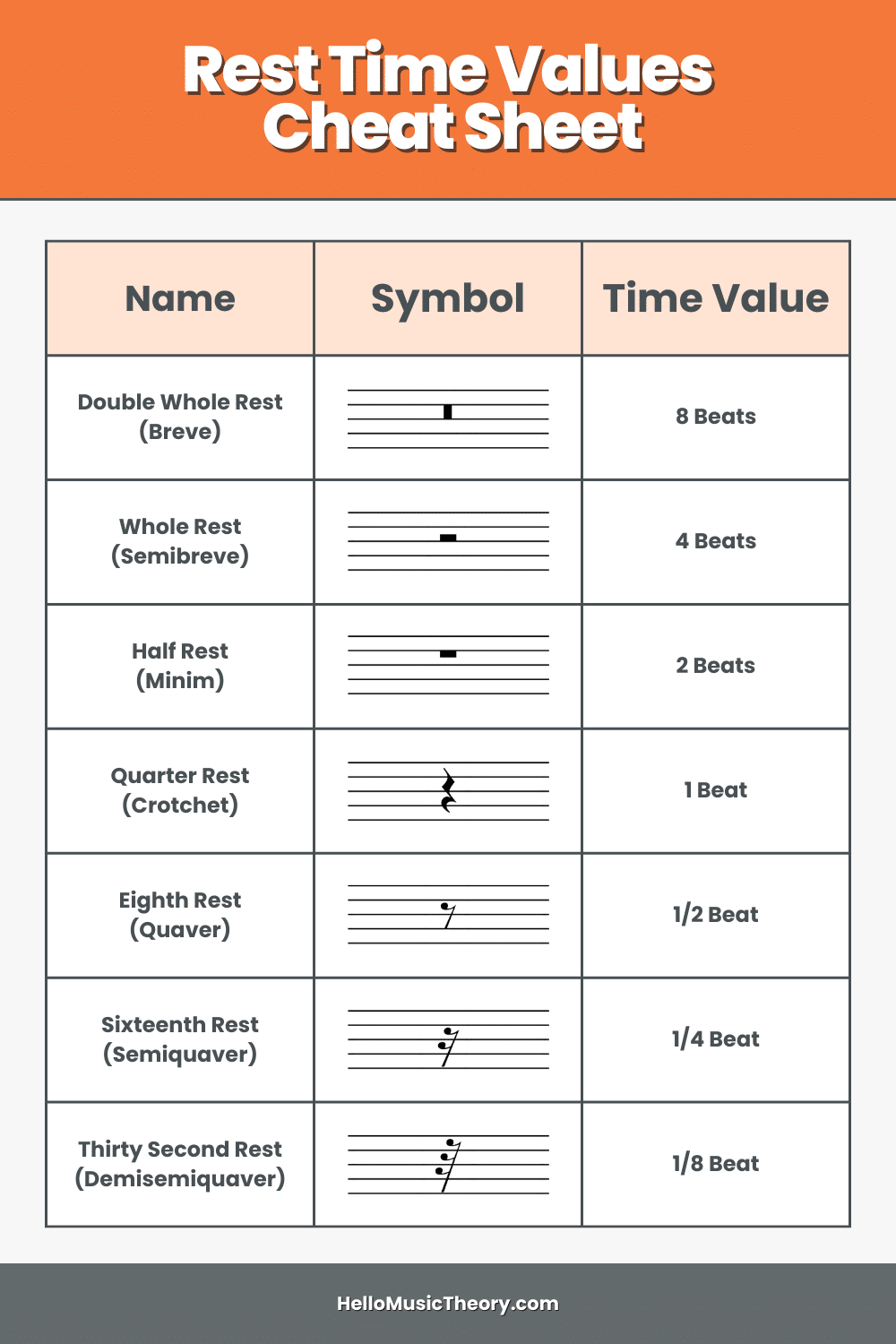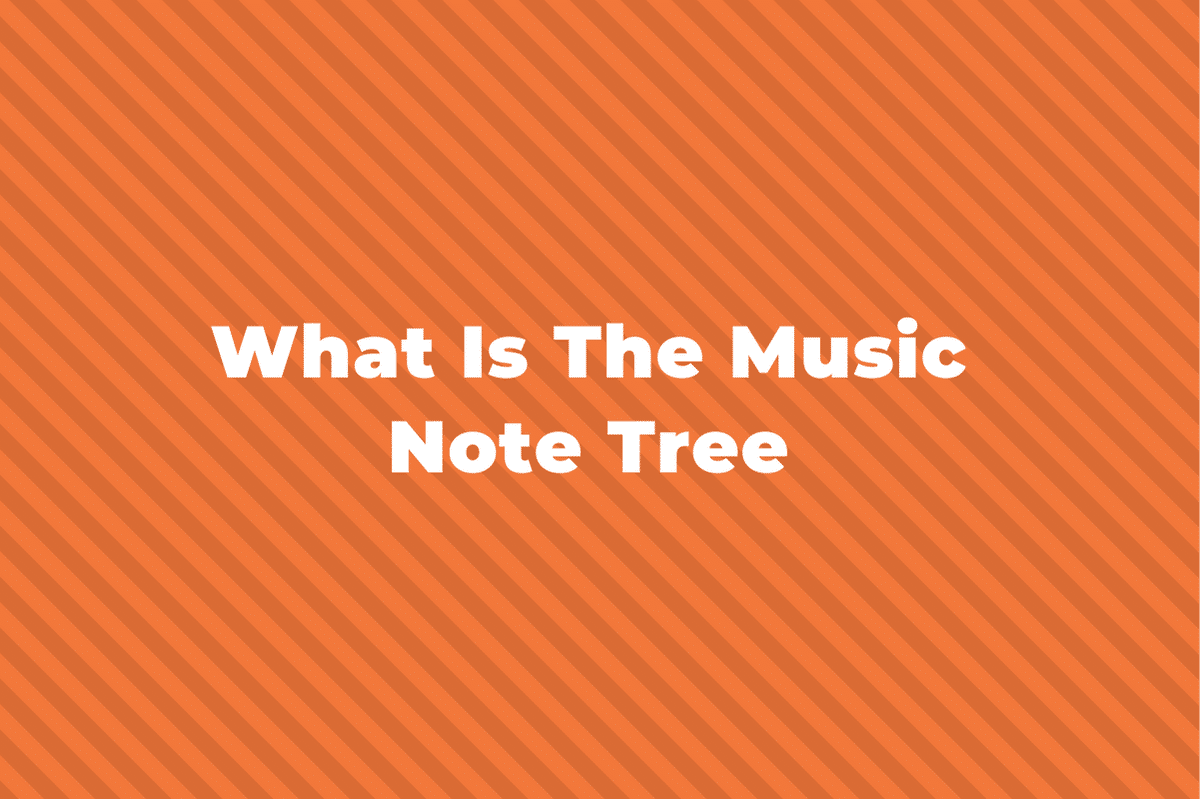In music, we indicate to musicians when to play by using different types of musical notes. But what happens when we want to tell the musician not to play? It’s times like this that we used a type of symbol called a rest.
In this post we’re going to cover look in depth at what rests are, how we use them and all the different types. Let’s get started.
What is a Rest?
A rest in music is a type of symbol that indicates that the musician should not play and that there should be silence.
Every type of note, like quarter notes, half notes, etc, has a corresponding rest symbol that has the same time value.
The Types of Rests

Whole Note Rest (Semibreve Rest)

A whole note rest (semibreve rest) is drawn as a small rectangle that hangs off the 2nd line from the top of the staff.
It has a value of four beats, the same as a whole note.
Half Note Rest (Minim Rest)

The Half Note Rest (minim rest) is a small rectangle that is very similar to the whole note rest, but instead of hanging from the second line, it sits on the middle line of the staff.
It has a value of two beats, the same as a half note.
Quick Tip!
To remember the difference between a whole note rest and half note rest, I think of the whole note rest being bigger (it lasts longer) than a half note, and so because it’s “heavier,” it hangs off the staff. The half note rest is “lighter” and so it sits on the staff.
Quarter Note Rest (Crotchet Rest)

The quarter note rest (crotchet rest) is quite complicated to draw.
It kind of looks like a skewed letter Z with a small letter C on the bottom.
It’s drawn right in the middle of the staff in-between the top and the bottom lines of the staff.
It has a value of one beat, the same as a quarter note.
Eighth Note Rest (Quaver Rest)

Up next, we have an Eighth Note Rest (quaver rest), which looks like a small number seven with a little blob on the end.
Like the quarter note rest, it sits right in the middle of the staff, sitting on the 4th line from the top.
It has a value of ½ of a beat, the same as an eighth note.
Sixteenth Note Rest (Semiquaver Rest)

Lastly, we have a Sixteenth Note Rest (semiquaver rest), which is very similar to the eighth note rest but slightly taller and has two flicks.
It sits on the bottom line of the staff.
It has a value of ¼ of a beat, the same as a sixteenth note.
Dotted Rests
Just as you can have dotted notes, which make the note last longer by half its time value, you can also have dotted rests, which make the rest last longer by half its time value.
One thing to note, though, is that the dot always sits in the second space from the top.
For example:

One thing to mention is that, unlike regular notes, which you can tie together, you can’t tie rests together. Instead, you should use another rest.
What Rest do you use for a Whole Bar of Silence?
The last thing to mention about rests has to do with having a whole measure of silence.
Whenever you want an entire measure to be silent, you always use a whole note rest. This is the case even if the time signature is 2/4 or 3/4.
See the examples below:






